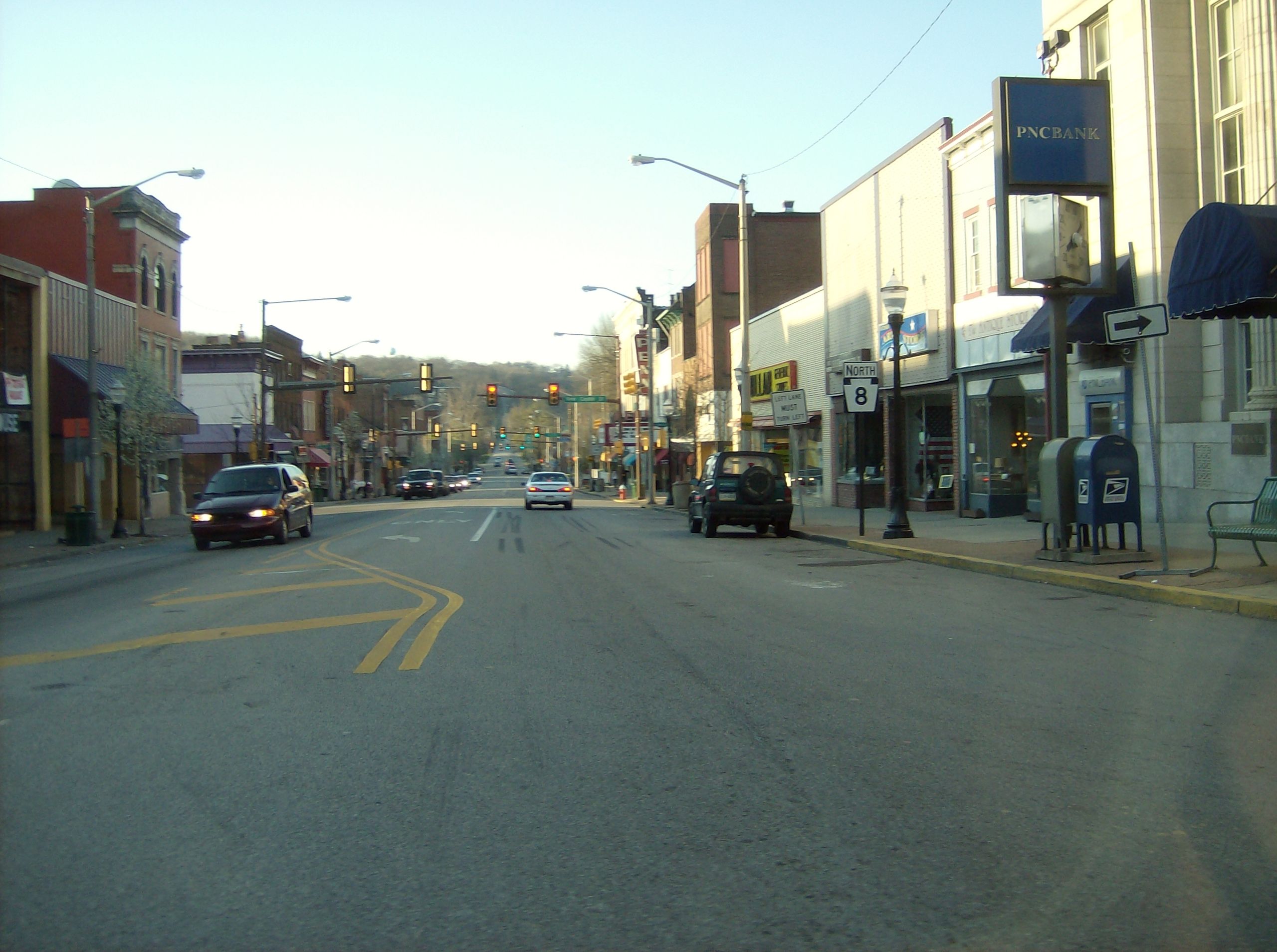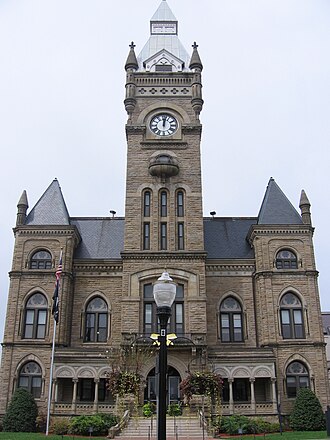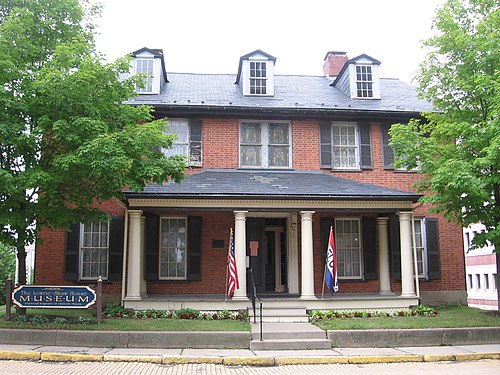Butler County, Pennsylvania
USGenWeb® Project
(Family History and Genealogy)
Main Street Butler, PA Butler was named for Maj. Gen. Richard Butler, who fell at the Battle of the Wabash, also known as St. Clair's Defeat, in western Ohio in 1791. In the early 1900s, Butler was a "Steel Belt" manufacturing and industrial area. It remains home to a Cleveland Cliffs Butler Works, formerly AK Steel Butler Works. In 1902, the Standard Steel Car Company opened one of its largest railcar manufacturing facilities
in Butler, where it manufactured some of the first all-steel rail cars. Standard Steel Car Company merged with Pullman Palace Car Company in 1934, creating Pullman-Standard, a monopoly that was eventually broken by the federal government. The American Austin Car Company (1929–1941) was headquartered in the area. Later the firm changed its name to American Bantam Car Company. Bantam was an early producer of small fuel-efficient vehicles through the 1930s. In 1940, lead engineer Karl Probst led Bantam design
team to create what later was termed the iconic WWII Jeep. Sizeable military contracts eventually went to Willys and Ford, as the Bantam factory had floundered. Today, a controversial monument stands near the courthouse commemorating Bantam's "creation of the Jeep". The following structures are listed in the National Register of Historic Places

In 1803, John and Samuel Cunningham became the first settlers in the village of Butler. After settling in Butler, the two brothers laid out the community by drawing up plots of land for more incoming settlers. By 1817, the community was incorporated into a borough.
The first settlers were of Irish or Scottish descent and were driving westward from Connecticut. In 1802, the German immigrants began arriving, with Detmar Basse settling in Jackson Township in 1802 and founding Zelienople the following year. After George Rapp arrived in 1805
and founded Harmony, larger numbers of settlers followed. John A. Roebling settled Saxonburg in 1832, by which time most of the county was filled with German settlers.
Butler was incorporated into a city in 1918.
About 2,500 workers produced 60 steel-bed railroad cars per day in 1902. Eastern European immigrants were lured to the area in the early 20th century with the promise of reliable jobs, which offered company housing and a company store. The company constructed a baseball
park which was the home of a New York Yankees farm team. The steel workers of Butler made artillery and naval shells during World War II.
The Pullman-Standard plant closed in 1982, but was purchased in 1984 by Trinity Industries. Trinity Industries left the factory in 1993, and the factory was completely demolished in 2005. The site is now occupied by a vacant strip mall, as well as the Butler Transit Authority
inter-modal facility. In 2011 the BTA moved a covered hopper rail-car, built in 1974, to the bus terminal in recognition of the former Pullman-Standard plant.


Butler County Courthouse Senator Walter Lowrie House


